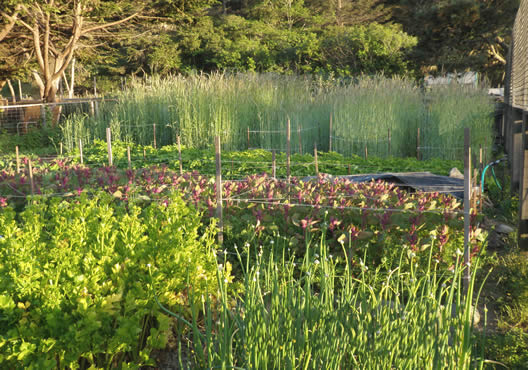Enhancing Our Small-Scale Farms Sustainably with the Biointensive Method
The following is an excerpt from the booklet Achieving More with Less, to be published later this year.
"Many countries have tried to promote large-scale farming, believing that smallholder
farming is inefficient, backward, and resistant to change. The results were
unimpressive and sometimes disastrous."
As many corporations and governments continue to push for more chemically intensive, large- scale GMO farms, the United Nations has declared that this is not the solution for feeding the world. In their 2013 publication titled "Trade and Environmental Review 2013: Wake Up Before It's Too Late" the UN declares food sovereignty as well as food security key issues to the future, citing that industrialized farming methods and "quick-fix technological solutions" have done more to harm the situation than help. Food sovereignty incorporates the human rights of farmers. The Biointensive method is a best-practices approach to small-scale farming. When the 8 principles of the GROW BIOINTENSIVE method are applied to small-scale farms and backyard gardens, the result is an increase in yields and soil health, a decrease in resource consumption, and a further micro-scaling of the human agricultural footprint. This methodology can help the small farmers of the world empower themselves to provide more for themselves and their communities, while requiring less fertilizer, energy and water. In contrast, large-scale industrial GMO and chemical farming is destroying soil faster than it can be replenished, consumes far more energy and resources, and is far less efficient at producing food. However, using the GB method comes with responsibility: an increase in yields can mean an increase in the rate at which you are extracting soil nutrients. The final of the 8 principles of the GROW BIOINTENSIVE method is A Whole-Systems Perspective. It is vitally important that these principles be used together, or we risk intensifying the loss of our soils as well as decreasing yields. We must also minimize exportation of crops—grow soil first, food second and money third.
In a study conducted at Oregon State University (titled Trophic Issues, November 21, 2012) it is estimated that if the rest of the world ate as Americans do, half of the global population would die of starvation due to lack of land resources. National Geographic stated in 2015 that 38% of the Earth's ice-free surface is dedicated to farming—the rest of it is un-farmable. Populations are growing, but we are losing soil at a frightening pace. If you take the total arable land area and divide it by the total population, there is less than 9,000 sq ft per person available to grow each person's complete diet. Half of this land must be preserved in ecosystems if we are to have adequate habitat for species other than ourselves, and for functioning climate, hydrological and carbon cycles. The average vegan diet requires 7,000 sq ft conventionally grown, which means a total of 14,000 sq ft would be required per person to also include the protection of our ecosystems. There is not enough available land to support this. Understanding the escalating world situation, Ecology Action has worked for over 45 years to develop diets which can be grown in less than 4,500 sq ft, and require a fraction of the resources to grow. The diet design we are about to look at in this upcoming booklet is revolutionary. We are now experimenting with a complete diet design, with full sustainability considered in 1,000 sq ft or less, that can be accomplished in most backyard gardens. Reestablishing a strong gardening culture around the world will be vitally important in the future. This is the art of transforming a situation of scarcity into abundance. Diet and Land Area Requirements
Matt's booklet Achieving More with Less will be published online later this year, and will be available with our other electronic-format booklets here.
top | Newsletter Home |Table of Contents| Archive
|
|||||||||||||||||||



